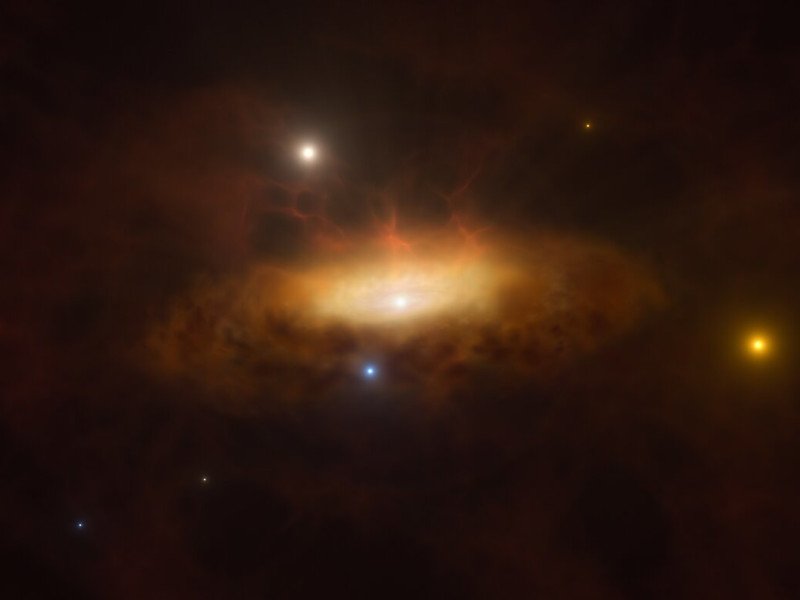
A distant galaxy began shining bright in 2019 and is still growing brighter four years later – activity that the researchers called ‘unprecedented’.
Researchers were left stunned when a seemingly dull galaxy suddenly shined brighter than ever before and believe they are witnessing the sudden awakening of a massive black hole.
The activity was first spotted in 2019, when an unremarkable galaxy called SDSS1335+0728 began shining bright. This prompted researchers to use several space and ground-based observatories – including the European Southern Observatory’s (ESO) Very Large Telescope – to track the galaxy’s brightness.
There are certain cosmic phenomena – such as supernova explosions – that can make galaxies suddenly light up. But the researchers of the new study released today (18 June) say these variations usually only last for a few dozen to a few hundred days. But four years on from the initial activity, this particular galaxy is still growing brighter.
“Imagine you’ve been observing a distant galaxy for years, and it always seemed calm and inactive,” said ESO astronomer Dr Paula Sánchez Sáez, lead author of the study. “Suddenly, its [core] starts showing dramatic changes in brightness, unlike any typical events we’ve seen before.”
By comparing the data taken before and after December 2019, the researchers found that this galaxy is radiating much more light at ultraviolet, optical and infrared wavelengths. The galaxy also started emitting X-rays in February of this year.
The activity has been described as “unprecedented” by Sáez and noted that the data will provide “valuable information on how black holes grow and evolve”.
The team said massive black holes have masses that are more than one hundred thousand times that of our sun and exist at the centre of most galaxies, including our own Milky Way. Previous studies have reported inactive galaxies becoming active after several years, but this is the first time that the actual awakening of a massive black hole has been observed in real time.
The researchers said follow-up observations are still needed to rule out alternative explanations – such as the an unusually slow tidal disruption event. These events occur when a star gets too close to a black hole and are pulled apart by the gravitational force.
In a study released last month, researchers looked at a tidal disruption event to measure how fast a black hole spins, which could be used to learn more about how they have evolved over time.
Find out how emerging tech trends are transforming tomorrow with our new podcast, Future Human: The Series. Listen now on Spotify, on Apple or wherever you get your podcasts.

